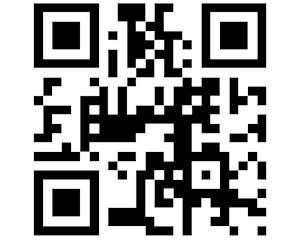On the back of Granada Hills Realtor Laura Carrigan’s business card is a perfectly square, black-and-white pixilated QR code. QR— or quick response — codes are two-dimensional bar codes that are quickly becoming a trendy tool in business marketing campaigns throughout the Valley region and around the world. Developed in 1994 by Toyota’s Denso-Wave subsidiary to track car parts, the square codes comprise a white background with black blocks or lines that embed text and other data which can be downloaded and read by a smartphone. Companies can use QR codes to direct customers to a Web page, social media site, or display basic contact information. Carrigan uses them to promote local home listings. When Carrigan has a new home for sale, she creates a QR code for the property and posts the code on her property listings Web page and on the flyers she distributes. “It makes it easier for my customers,” Carrigan said. “This is just a tool to get you to my location and my information on your phone, so you don’t have to add my number.” Area marketing experts say most QR codes can be created for using free online applications, which are generally easy to use. Some say the business marketing applications for QR codes are seemingly endless. “You can put it on things that people can pick up and touch like coffee mugs and T-shirts,” said Samantha Deeder, president of 4D Marketing Group in Westlake Village. Companies that are more visual, such as real estate firms, can reap the benefits of using QR codes, she said. One of Deeder’s clients, the Oakview Apartments in Thousand Oaks, are considering placing QR codes on brochures so apartment hunters can watch a video tour of available units. QR codes are an instant way for companies to communicate with customers, she said. “It replaces the need to write down information, write down a phone a number.” In mid-September, Encino accounting firm Kirsch Kohn & Bridge LLP plans to roll out new business cards that feature a QR code on the back, said KK&B managing partner Stuart Jaffe. “There’s no significant cost, so why wouldn’t you try it?” Jaffe said. “Business cards in and of themselves are sort of like yesterday’s news — it’s kind of a very old way to pass around information.” Hamilton Chan, CEO and founder of Paperlinks, a QR code generator company in Los Angeles, said 10,000 users have signed up to use QR codes since the company launched last October. QR codes are the “bridge” between the offline world and the online world, he said. Users can set up an account and create a QR code in seconds, he said, noting the company also can provide users analytics data to see how many times codes have been scanned. Codes attract skepticism, buzz Like any marketing tactic, QR codes have their pitfalls. For example, in order for the method to be successful, the intended audience must have a smartphone and download and install the right QR reader. Plus, there are many people who are shy to adopt new forms of technology and may not be aware of QR codes or know how to use them. One QR code skeptic, at least for now, is Richard Ferraro, franchise owner of five Golden Spoon yogurt shops in Thousand Oaks, Agoura Hills, Simi Valley and Newbury Park. He has his eye on what Starbucks, Subway and Target will do with the codes. “They drive a lot of adoption relative to the quick service and food service industry,” Ferraro said. “It will not become universally adopted and accepted until more chains and more large retailers start using it.” Increasingly, mall-based retailers are using QR codes to customize their marketing materials, said Juliet Mothershed, marketing director for Westfield Fashion Square mall in Sherman Oaks. Westfield malls used the codes this past spring to raise funds for children caught in Japan’s earthquake and tsunami, she said. Mothershed said she first saw QR codes when she was visiting Japan in 2008. “I thought, ‘This is the future.’ To me it seemed like such a great way to disseminate information into the palm of your hand in an instant. In Japan they are everywhere, they’re on your place mats, and they’re on the packages on your food.” Chan says the widespread availability of free QR code readers will eventually override any consumer concerns. QR codes will become the staple of any company’s social media marketing, he said. “It puts the control of branding in the company’s hands and lets consumers pull information from the Internet as they need it,” Chan said. QR Codes have “limitless” marketing potential as smartphone usage grows, but they still must mesh with traditional marketing, Deeder said. “There’s actually a high level of strategic planning that goes into it,” she said. “You can’t just throw it on top. You have to have the Web site for the back end of it — it (the code) has to go somewhere.” Staff Reporter Mary Catherine Holcomb contributed to this report.
